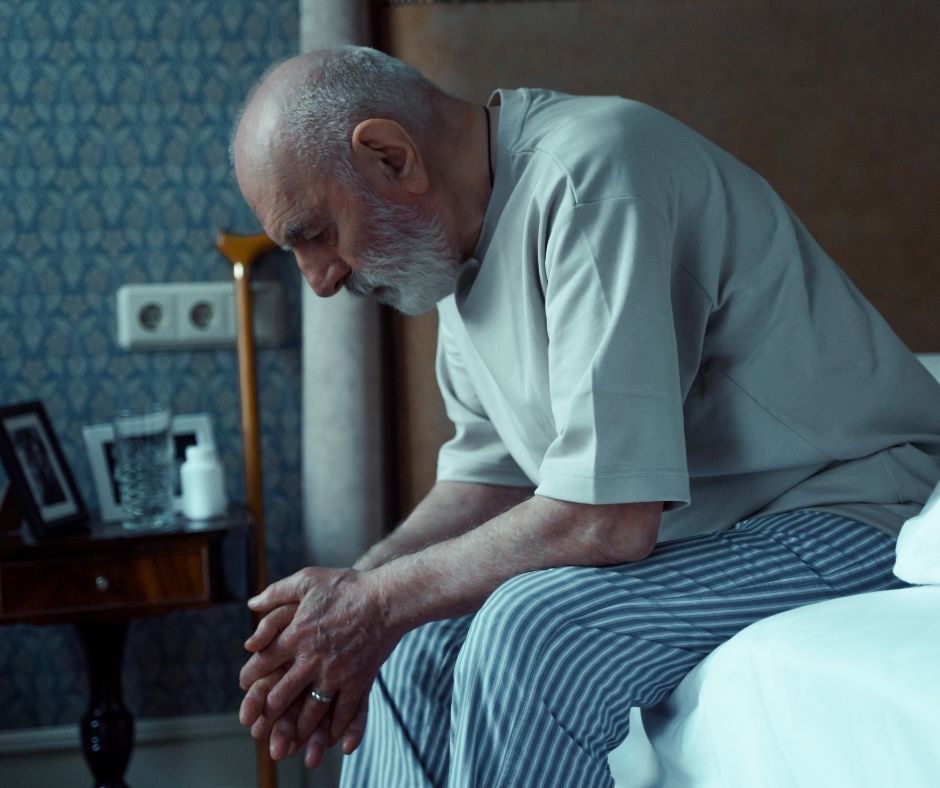Bipolar disorder is a chronic mood disorder characterized by episodes or periods of mood disturbances. People who have it experience changes in their moods and behaviors that affect their daily routines. The episodes do not follow a specific timeframe and range anywhere from a few hours to months. There are different types of bipolar disorder. Some of these are bipolar I, bipolar II, cyclothymic disorder, and other unspecified types of bipolar disorder.
Characterizing the type depends on how it manifests. For example, people with bipolar I tend to have severe mania and depression while those with bipolar II have hypomania, a less extreme form of mania.1 However, this does not mean that bipolar II is a milder form of the disorder. Cyclothymic disorder or cyclothymia has a consistently unstable mood. They might experience brief periods of stability, but these last less than eight weeks.
Cultural context plays a significant role in how mental health conditions manifest and are experienced.2 In Dubai, one of the difficulties encountered by many people with bipolar disorder is the fast-paced lifestyle. It comes with certain expectations for behavior, which is not compatible with someone who is going through an episode.
This condition was previously called manic-depressive illness or manic depression. The change is to provide clarity in diagnosis because “manic depression” is also used for other mental conditions. This is a fortunate development, considering that mental health issues are still stigmatized in the United Arab Emirates.3

What are the symptoms of bipolar disorder?
The symptoms of this condition depend on the type. However, there are some similarities.4 All of them involve shifts in mood, which are known to be hypomanic/manic and depressive episodes. It is important to note that these episodes are not permanent. People with this disorder also experience normal moods, which are referred to as euthymia.
Mania
Mania occurs in people with bipolar I disorder. In order to be diagnosed with this, mental health professionals check if the patient has experienced at least one manic episode for at least a week with or without a depressive episode. Mania is an abnormal change from the usual mood and activities. Examples are a notable increase in energy and a feeling that less sleep is needed, extreme happiness, risky behavior, or hallucinations or delusions.5 Manic episodes last at least a week.
As a psychologist, I want to point out that a manic episode does not necessarily mean that a person turns violent and dangerous. Part of the stigma that arises from bipolar disorder is that people tend to associate mania with “maniac”, which has a completely different meaning.
Hypomania
Hypomania is usually associated with bipolar II disorder. While it may seem less severe, it is still disruptive to daily routines. The difference between hypomania and mania is that the latter can lead to psychosis and consequently, hospitalization. On the other hand, hypomania does not last as long and their functions usually are not completely impaired.
Depressive Episodes
Depressive episodes are one of the distinctions between the types of bipolar disorder. In the first type, at least one major depressive episode occurs. However, it is not required. In bipolar II, there are one or more major depressive episodes. In both cases, people experience euthymia. A major depressive episode is usually characterized by insomnia, uncontrollable crying, loss of interest in the usual activities and routines, and fatigue. There can also be thoughts of death or suicide.6
What are the causes of bipolar disorder?
The exact cause of bipolar disorder is still unknown. However, studies show that there is a genetic and environmental component to it.7
First, there have been numerous studies to see if bipolar disorder can be inherited. Significant to this is the research on the different types of twins. Identical twins are twins that develop from the same egg and that eventually split into two. On the other hand, fraternal twins result from two separate fertilized eggs. This means that identical twins share the same genetic material, while fraternal twins do not. For identical twins, if one twin has bipolar disorder, the likelihood of the other one having bipolar disorder is from 40 to 70 percent. For fraternal twins, it is only at 5 to 10 percent.8
Next, the environment can also be a factor in the occurrence of bipolar disorder. Stressors can trigger episodes. For example, sleep deprivation, hormonal fluctuations during a woman’s monthly cycle, and injury can trigger a depressive episode. On the other hand, starting a new creative hobby can cause a manic episode to occur.
Although researchers do not fully know how it works, they attribute the effects of these stressors to cortisol levels in the body. Stress triggers an increase in cortisol production, which can disrupt the way the brain functions. According to research, cortisol levels remain relatively high in people with bipolar disorder even when no stress is present.9

What are the treatment options for bipolar disorder?
There is no cure for bipolar disorder. It is a typically lifelong condition. Management depends on the person, so treatments are tailor-fit to the individual. The usual methods for management are therapy, lifestyle changes, and medication.
There are certain types of drugs that help stabilize the mood. These work to prevent mania and depression in people with bipolar disorder. Examples of these are anti-convulsants and anti-psychotic drugs. It is important for people to communicate with their doctor when taking these medicines. Medication can be changed and adjusted to best fit the person.
Since a lot of the symptoms of bipolar disorder involve a person’s emotional state, psychotherapy such as cognitive behavioral therapy (CBT) or dialectical behavioral therapy (DBT) is often recommended. These are two kinds of talk therapy that deal with emotions. In CBT, the focus is changing negative thought patterns while DBT accepts these emotions and finds ways to regulate them. Therapy helps people with bipolar disorder because it can identify the shifts in mood that tend to result in manic or depressive episodes. A person can also learn coping techniques to improve the quality of life.
Changes in lifestyle such as avoiding alcohol10, exercising11, and meditation12 can also be helpful.
Conclusion: Understanding Bipolar Disorders in Dubai
In Dubai, steps are being taken to remove the stigma associated with it, so people can seek assistance without fear of judgment. For example, the Dubai Health Authority often institutes awareness campaigns to educate the public about mental health issues. Treatments like medication and therapy are also available. In addition, alternative treatments also seem promising. For example, Harvard Health Publishing encourages the use of omega-3 fatty acids to help mitigate the effects of mood disorders.
At first glance, people with bipolar disorders may seem like they have too many challenges before them. These can range from the societal pressures they receive to their ability to function. But it is important to seek the advice of a mental health professional to help address bipolar disorder. They can identify the best treatment options to help manage this condition. When addressed, bipolar disorder does not have to get in the way of enjoying a high-quality life.
Cited Sources:
- American Psychiatric Association. (2022). Diagnostic and statistical manual of mental disorders (5th ed., text rev.). https://doi.org/10.1176/appi.books.9780890425787 ↩︎
- Kronfol, Z., Khalil, M. Z., Kumar, P., Suhre, K., Karam, E., & McInnis, M. (2015). Bipolar disorders in the Arab world: a critical review. Annals of the New York Academy of Sciences. Issue: Qatar Clinical Neuroscience Conference. ↩︎
- Andrade G, Bedewy D, Elamin ABA, Abdelmonem KYA, Teir HJ, Alqaderi N. Attitudes towards mental health problems in a sample of United Arab Emirates’ residents. Middle East Curr Psychiatry. 2022;29(1):88. doi: 10.1186/s43045-022-00255-4. Epub 2022 Nov 18. PMCID: PMC9672605. ↩︎
- Datto C, Pottorf WJ, Feeley L, Laporte S, Liss C. Bipolar II compared with bipolar I disorder: baseline characteristics and treatment response to quetiapine in a pooled analysis of five placebo-controlled clinical trials of acute bipolar depression. Ann Gen Psychiatry. 2016;15:9. doi:10.1186/s12991-016-0096-0 ↩︎
- National Institute of Mental Health. Bipolar disorder. https://www.nimh.nih.gov/health/topics/bipolar-disorder ↩︎
- Culpepper L. The diagnosis and treatment of bipolar disorder: decision-making in primary care. Prim Care Companion CNS Disord. 2014;16(3). doi:10.4088/PCC.13r01609 ↩︎
- National Institute of Mental Health. Bipolar Disorder. https://www.nimh.nih.gov/health/topics/bipolar-disorder#part_145403 ↩︎
- Gordovez FJA, McMahon FJ. The genetics of bipolar disorder. Mol Psychiatry. 2020;25(3):544-559. ↩︎
- van den Berg MT, Wester VL, Vreeker A, et al. Higher cortisol levels may proceed a manic episode and are related to disease severity in patients with bipolar disorder. Psychoneuroendocrinology. 2020;119:104658. doi:10.1016/j.psyneuen.2020.104658 ↩︎
- Sperry SH, Stromberg AR, Murphy VA, et al. Longitudinal Interplay Between Alcohol Use, Mood, and Functioning in Bipolar Spectrum Disorders. JAMA Netw Open. 2024;7(6):e2415295. doi:10.1001/jamanetworkopen.2024.15295 ↩︎
- Melo MC, Daher Ede F, Albuquerque SG, de Bruin VM. Exercise in bipolar patients: A systematic review. J Affect Disord. 2016 Jul 1;198:32-8. doi: 10.1016/j.jad.2016.03.004. Epub 2016 Mar 15. PMID: 26998794. ↩︎
- Pandya SP. Meditation for treating adults with bipolar disorder II: A multi-city study. Clin Psychol Psychother. 2019 Mar;26(2):252-261. doi: 10.1002/cpp.2347. Epub 2019 Jan 24. PMID: 30536496. ↩︎
